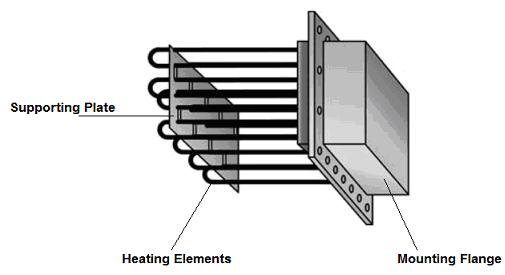Load Banks
Last updated on January 9th, 2023 at 08:19 pm
Wind energy industry has becoming a large contributor of the renewable energy production because of its high energy efficiency and reliability along with its revenue growth for the U.S. Government and Government of Canada. In a wind farm, various turbine testing must be done prior and after the windmill construction in order to ensure perfect functionality during the operation.
Running a wind turbine system at lower efficiency may significantly increase the organization’s project cost and, in addition, a faulty process could cause negative environmental impacts such as unnecessary energy wastes. In order to verify the functionality of the wind turbine system, a resistor load bank is usually considered to test the power generator. A load bank is a series of resistors that is used to generate a dummy electrical load in order to test the turbine’s actual performance. The generated load is used to mimic or simulate the generator’s operation in a repeatable way. The applied load can be adjusted to produces various inputs (steady or unsteady) to the generator sets. In this way, malfunctioning issues and causes could be discovered during the maintenance rather than the actual operation. As a result, the chances of a power supply interruption and blackout will greatly decrease with the use of load banks.
A resistive load can be generated by convective heat. A cost effective method to generate this type of heat is to use forced-air heating which is provided by duct air heaters. The duct heater can be then used as the load bank to generate dummy loads for the wind turbine power generator. Even though a duct heater is commonly used for air duct, a large capacity air duct heater can, however, expand its capability into a resistor load bank. The basic design of a forced-air duct heater consists of multiple bended heating elements tubes attached to a supporting flange (Figure 1).
The convective heat is generated from the heating elements when the forced air is made contact with the heater. The electrical connections are wired on the mounting flange while the circuit design is entirely based on the individual target application. A terminal boxing enclosure is available to protect the air duct heater from physical disturbance. To explore further about possible types of duct heaters that could be used as load banks, visit WATTCO™’s website or contact our technical representatives for additional information.
The applied load from the duct air heater can be controlled by a temperature controller which is used to adjust the applied temperature. A calibration from the applied temperature into electrical load can be used to ensure that the heater will provide the proper load for the testing. The heater temperature controller is particularly useful for testing a generator’s capacity with multiple loads. Testing a power generator with various ranges of load can fully test its stability. Since the duct heater is designed to be flexible to use, it can be used for regular generator maintenance. Periodic generator tests are essential to maintain the stability and endurance of the windmill process. In addition, regular testing can reduce the amount of potential delays on large repair and replacements for the defective power generator.
In addition to the windmill system testing, an air duct heater can also be used to remove unwanted chemical build-ups of the turbine system, such as carbon accumulation, from the equipment since many organic and inorganic compounds dissociate from metallic structures at high temperature. This could be done simultaneously with the regular load testing/maintenance while minimizing the physical cleaning time.
Duct air heaters could also be used in energy industries other than in wind power generation. Any industry that requires load testing on power generator sets or batteries could use load banks to test the power system’s capability. The function is similar to the wind turbine testing which is to force the power system to perform as it is designed by applying the artificial load.
The design of the load bank air duct heater will be customized based on the target windmill’s structure and specification. Information such as the environment, generator design and load requirements of the wind turbines are essentially needed in order to build an efficient load bank that will fit to your target application. Therefore, feel free to contact WATTCO™’s technical supports for information, inquiries about the load bank design or the price quote.
Reference
1. United States. Greenhouse Gas Technology Center Southern Research Institute. Test and Quality Assurance Plan. U.S. Environmetal Protection Agency, Oct. 2006. Web. Jan 4 2012. p. 1-2 to 1-4, 2-5
2. United States. Intertek Carnot Emission Services. Specializing in Offroad Engine Services. U.S. Consumer Product Safety Commission, July 30. 2011. Web. Jan 4 2012. p. 6 to 7

